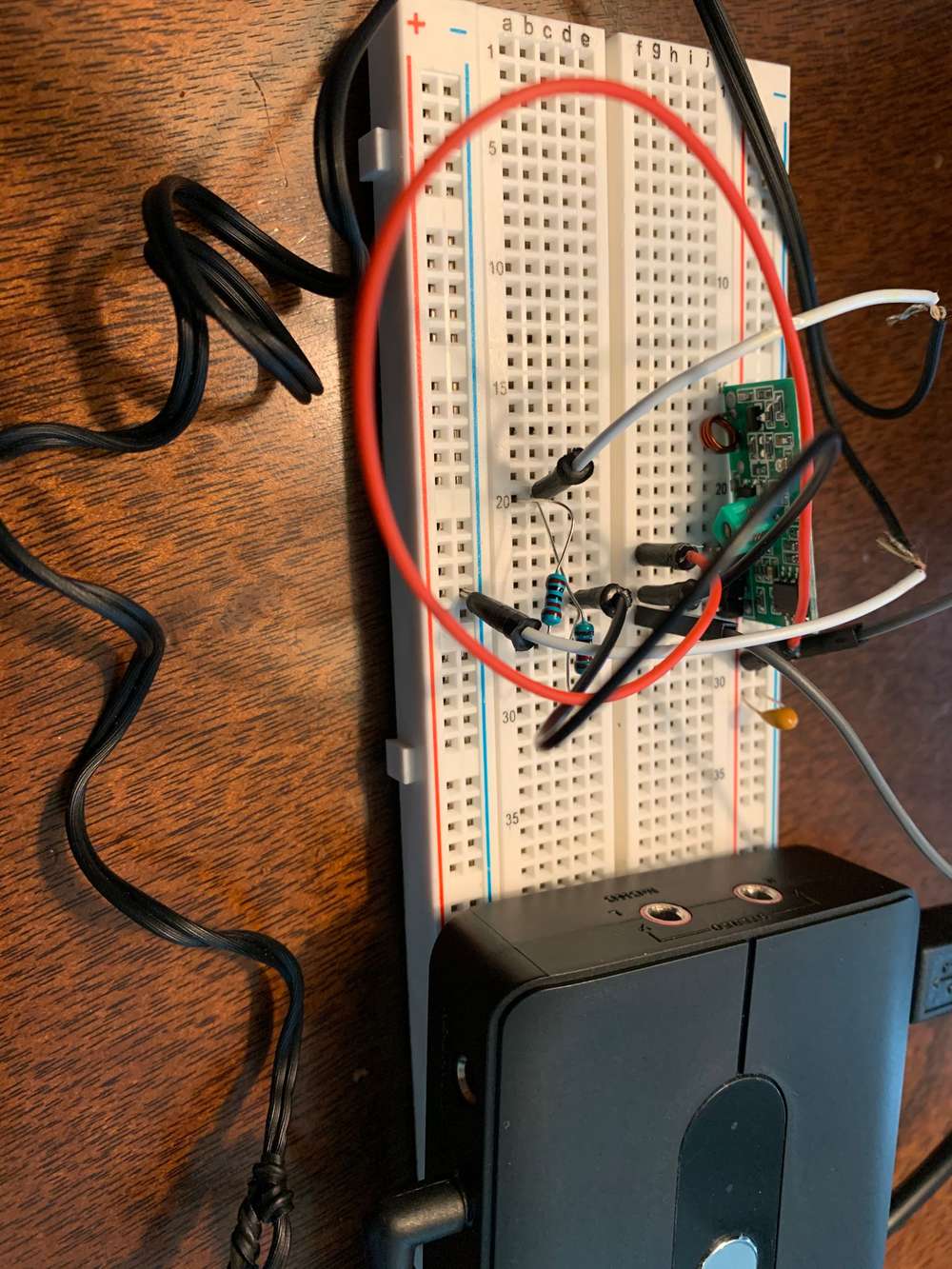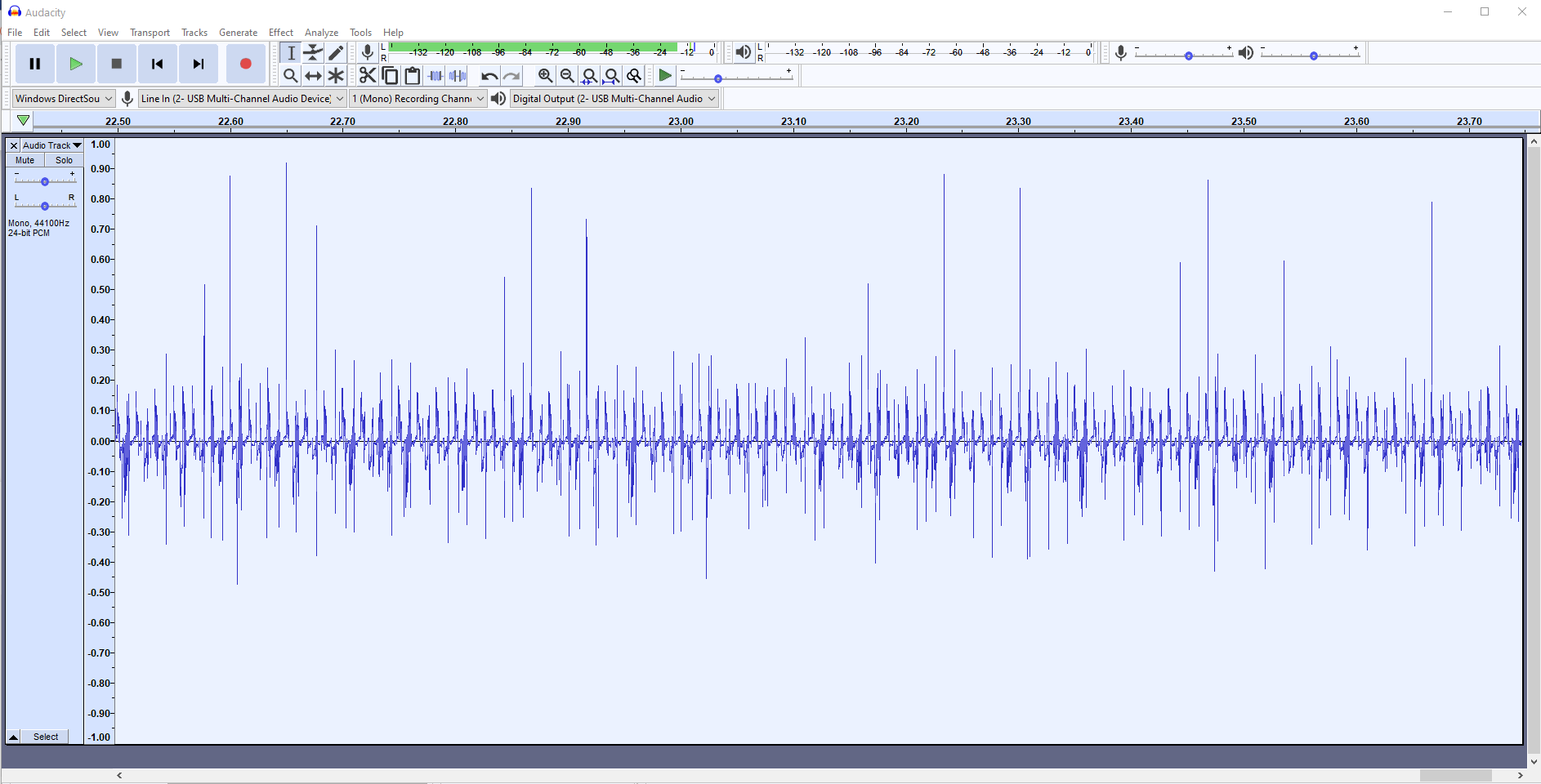@Ivanli I assume this was directed at me? If so, yes, I will gladly post all my results, working code, video etc. Unfortunately I have this major stumbling block that I am unable to figure out the RF codes (I am using a 15-channel Dooya DC2702 transmitter; the receiver is unfortunately not accessible since it's in the roller motor housing). Not sure if I am using Audacity incorrectly, whether I have too much noise, but my Chinese RF433 receiver seems not to pick up any signal from the DC2702, even if I am within a few centimeters from the receiver). The sniffer circuit I used is: https://www.codrey.com/electronic-circuits/433mhz-rf-sniffer/. I also tried using @petewill's circuit. Neither seems to want to record.
zebmina
Posts
-
Automate RF 433 MHz Dooya motor control -
Automate RF 433 MHz Dooya motor control@electrik My apologies - I have been otherwise occupied :white_frowning_face:
Your RFLink project sounds interesting. My objective is to decode Dooya DC2702 transmissions and use that with a Vera controller. Since I already have that, it makes sense for me to use that.
Basically, I had a bunch of roller blinds I used manually - chain pull. Raising/lowering 21 blinds became onerous so I decided to put motors inside. I did not want to mess up my walls so decided to use rechargeable battery motors, and found a set of AliExpress that were not too expensive (I did need to do some surgery on the existing brackets/housing, but not too bad. For the last year or so I have remote-controlled blinds! SO my next step of course is to control them using my Vera controller. And that's where I am stuck because I cannot decode the RF signals...
-
Trouble with RF433MHz snifferRe: Controlling Blinds.com RF Dooya Motors with Arduino and Vera
Hello @petewill. I just recently got into roller blinds and trying to sniff codes from a Dooya DC2702 15-channel transmitter.
I purchased a set of 433MHz transmitter/receiver pairs, hooked 'em up to a couple of Arduino Nano, with the Nanos programmed using a couple of FTD2132s. With this setup, and example sketches from the RadioHead library, I was able to successfully test out sending/receiving ASCII text from the transmit side to the receive side.
Next, I constructed a receive-side circuit together with a 3.5mm connector and a U2AUDIO7 USB device that has a LINE-IN port. I was expecting that Audacity (V2.4.2) would be able to record signals received by the receiver.
However, I am not able to see ANY signal (other than background noise), and am wondering if you had any suggestions to help me begin recording actual signals. Based on all the posts I have seen about this, it seems obvious to me that I am doing something wrong either with the sniffer circuit, Audacity settings or both.
Am attaching pics to help clarify what I am doing. Greatly appreciate any tips.
Regards,
Saify



-
Automate RF 433 MHz Dooya motor controlAfter a bunch of fiddling around, I got an Uno+nRF24L01 to talk to a Nano+nRF24L01 without any lossy data. I did not use any capacitors across the Vcc/Gnd pins on either.
My next step is to use @petewill's approach to include an RF433 transmitter to the Nano side.
I'm not 100% sure if this is the correct approach, but seems logical to me.
Any guidance would be greatly appreciated.
-
Automate RF 433 MHz Dooya motor controlI have been following @petewill's posts with great interest (although a total noob!).
I have a few roller blind motors purchased in China (well, 21 grouped into 10 zones)
I retro-fitted the motors into my existing roller blinds and programmed them with a 15-channel remote I received from the motor manufacturer. As far as I could determine, a "standard" Dooya DC2702 remote works perfectly with these motors.
I would like to integrate these blinds with my home automation (Vera), but am confused about what I need to do. If it turns out that integrating with Vera is not possible, but a standalone web app can be created to do this, that would be fine with me.
Principally, the instructions I have seen online suggest I need to have access to both the transmitter and receiver components. The receiver bit is not possible to get to since it's in the motor assembly.
It seems to me (in my uneducated way) that any RF 433MHz transmitter/receiver pair should be fine to integrate, as long as the transmitter is able to send the correct codes to the receivers. Since there are potentially other RF devices floating around, I assume the transmitter must send a specific code that a receiver can identify (I guess like pairing Bluetooth). I hope my analogy is accurate.
Being a total noob, I would really like it if an expert could lay out the steps I need to follow. I can do any additional research, but am confused by the large number of potential options available, and am clearly not in a position to figure out which of these options makes sense for my situation.
Basically the steps I am hoping to clarify in my head are:
- Identify the components I need to use, i.e., an RF trans/receiver pair
- Arduino (possibly 2?)
- Any other components like resistors/capacitors etc.
- A typical circuit schematic that I can breadboard (initially before I create a more permanent thing)
- Any software libraries I need to have
- Sample code (I have programming background in C/Java/Python)
I read in one of Pete's threads that he used a sound card with a LINE connector and Audacity. I have an old computer lying around that probably has a sound card in it already (probably with a LINE-IN) that I could use - assuming that Audacity will work on an ancient computer circa 1998! -- Are there alternatives to this?
Any suggestions and guidance that I could use would be greatly appreciated.
I apologize for the rather long list of items I am confused about, and hope you folks have some patience with me as I learn more about this. On the plus side, I think I am a quick study.
Regards.
-
110v-230v AC to Mysensors PCB board@aproxx I have a few left-over boards from the earlier release - where the holes for fuse2 were smaller than required (PTC Resettable Fuses 250V 1A TRF250-1000 PPTC Polymeric PTC PolySwitch). I wanted to use up the remaining boards, and wondering if the following fuse could be a substitute (USA-based, leads are smaller diameter and would fit the holes) - MF-R110 FUSE PTC RESETTABLE 1.10A HOLD MF-R110 110 MF.
Thanks for your guidance.
-
110v-230v AC to Mysensors PCB boardOK, this may be a really dumb question, but I need to ask, so please pardon my ignorance....
Clearly one main advantage of this is to control traditional light switches programatically and also through the standard light switch. How would I know whether someone flipped the light switch to turn on/off? How does the program "state" keep in sync with the "state" of the physical light switch?
Sorry again about what might be a rather dumb question.
-
110v-230v AC to Mysensors PCB board@aproxx Very nice! Just ordered.... But quite nervous - don't know much about electronic circuits, although I am quite good at following detailed instructions. You wouldn't happen to have a tutorial on how to populate the pcb?
-
110v-230v AC to Mysensors PCB board@aproxx I'm a complete newbie but am interested in exploring this! Do you have a tutorial on the steps to populate this circuit board? I am comfortable with soldering but new to electronic circuits. Is there a particular order in which components ought to be soldered? Would you recommend breadboarding to begin with? Any sample code that can be used to do a sanity test?
Your guidance is greatly appreciated!
-
Need Advice on Sizing a 5V DC Motor@hek : Many thanks! I can do the math to do a pulley system, but that is dependent on the size of the motor, yes? What would you think the minimum size of motor I should start with? Do I need to go to a 24VDC motor, or can I do something with 5VDC motor?
Regards..
-
Need Advice on Sizing a 5V DC MotorHi Experts!
Are there any tutorials on how to size a 5V DC motor; what I mean by that is I need to lift/lower a 5Kg weight. The speed is not that important, but the ability to lift a relatively heavy weight is.
I assume I need high torque, but have not figured out whether a particular motor is capable of lifting that type of weight.
Any advice/directions I can get are greatly appreciated.
